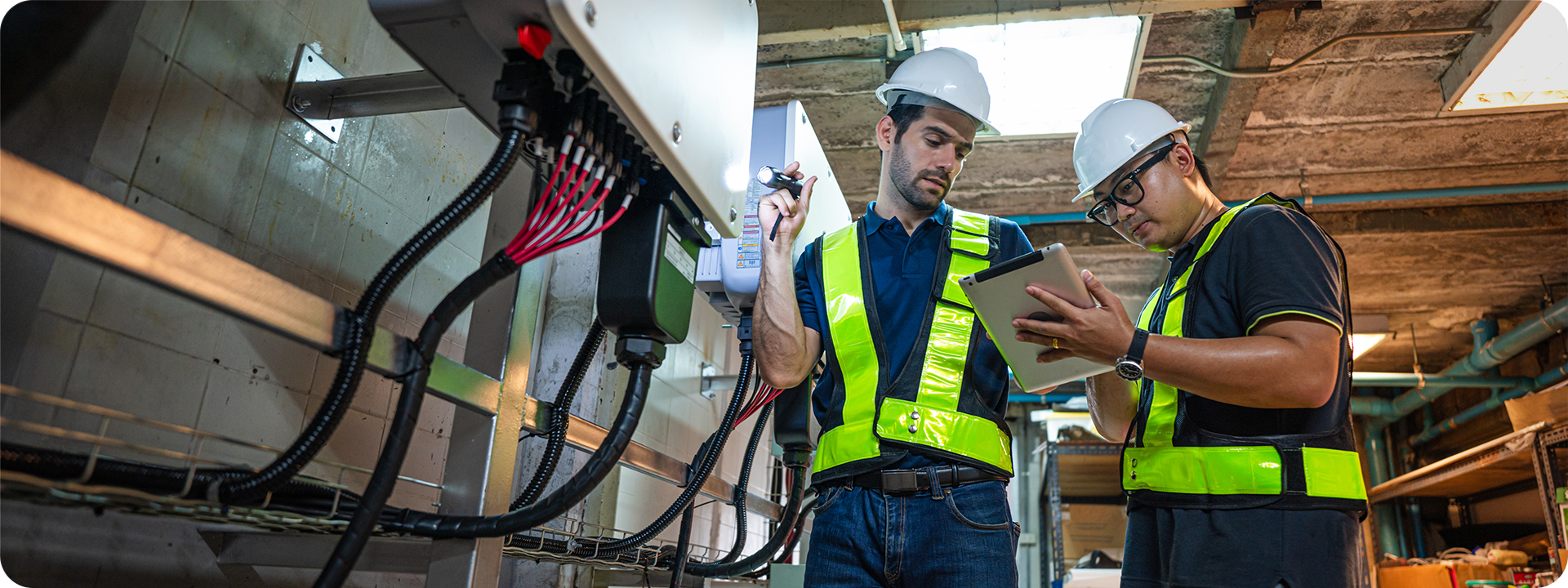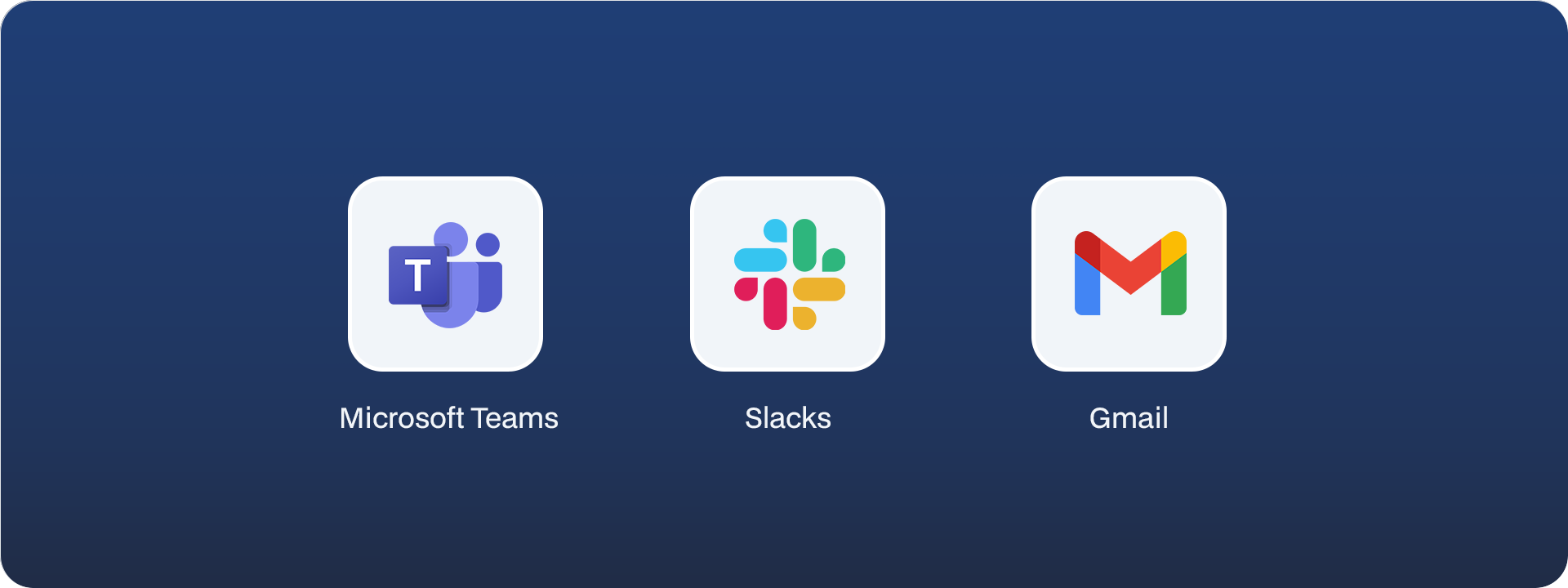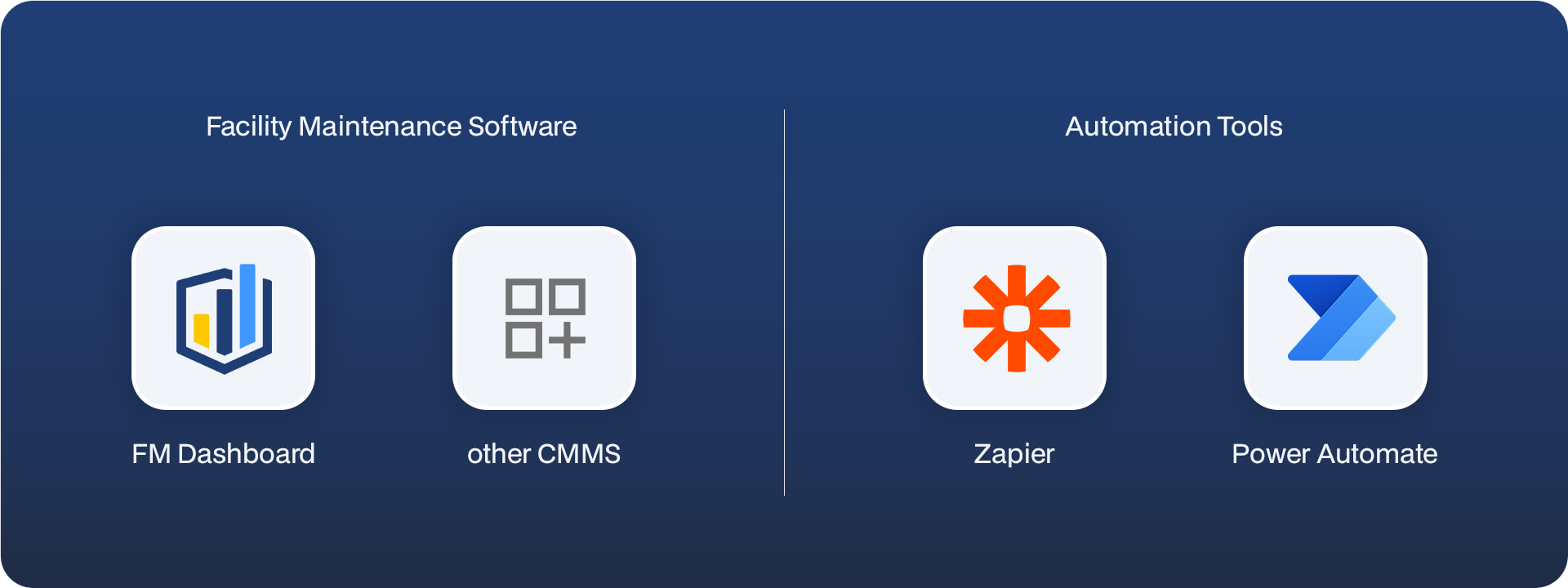MAINTENANCE WORKFLOW CHECKLIST
50-Point Discovery Checklist
The Exact Questions We Use to Map Maintenance Workflows.

This checklist is designed to provide a comprehensive, 360-degree view of your facilities maintenance operations. By methodically working through these questions, we can collaboratively map your current processes, identify opportunities for standardization, and define the key requirements for a more streamlined and accountable system.
I. Work Order Initiation & Triage (The "Front Door")

This section maps the lifecycle of a work order after triage, focusing on dispatch, vendor interaction, and resolution.
1. Describe the primary channels through which maintenance requests are initiated (e.g., phone call, software portal, email, IoT sensor).
2. Who is authorized to submit a work order? (e.g., Store Manager, any employee, Regional Manager).
3. What is the step-by-step process from the moment a request is submitted to when it is first reviewed by a dispatcher?
4. How are incoming requests categorized by trade (e.g., Gas, HVAC, Pest, Car Wash)? Is this done by the requestor or the dispatcher?
5. What is the formal procedure for handling requests that are not facilities-related (e.g., an IT or Marketing request)? How are these rerouted?
6. How do you identify and handle duplicate work orders for the same issue at the same location?
7. What initial troubleshooting steps, if any, is a store employee or dispatcher required to perform before a vendor is dispatched?
8. How is the initial priority level (e.g., Emergency, Urgent, Normal) assigned to a new work order, and who is responsible for this assessment?
9. What specific criteria define an "emergency"? What defines an "urgent" issue versus a "normal" one?
10. At what point in the process do you determine if an issue impacts sales, and how does that designation alter the workflow?
II. Process Execution & Vendor Management

This section maps the lifecycle of a work order after triage, focusing on dispatch, vendor interaction, and resolution.
11. Describe your process for selecting and dispatching a vendor. Do you have primary and secondary vendors for specific trades/regions?
12. What is your procedure for an issue that requires a complete shutdown of operations or fuel sales? Who has the authority to make that call?
13. Walk us through the process for following up on a high-priority work order. Are there defined follow-up cadences based on urgency?
14. How are "incomplete" work orders managed when a vendor must make a return visit? Who is responsible for tracking and ensuring the follow-up occurs?
15. What is the standard procedure for when a store reports unsatisfactory work from a vendor?
16. How do you manage vendors who fail to check in upon arrival or check out upon departure?
17. What is your process for managing preventative maintenance (PM) schedules? How are PM work orders generated and tracked differently from reactive ones?
18. Are there specific procedures that require using internal personnel (like your own drivers) instead of external vendors? How is this enforced?
19. Describe your price approval and NTE (Not-to-Exceed) escalation process. At what cost thresholds are different levels of management required to approve work?
20. How are warranties on equipment or previous repairs tracked and applied to new
work orders?
III. Communication & Knowledge Management

This section explores how information and procedures are stored, shared, and updated across the organization.
21. How are Standard Operating Procedures (SOPs) currently documented, stored, and accessed by your dispatch team?
22. What is the process for updating an SOP when a policy changes (e.g., the "drive-off" procedure)?
23. When a dispatcher has a question they can't answer, what is the formal process for escalating it to a manager or Subject Matter Expert (SME)?
24. How is the answer to that escalated question captured and shared so that other dispatchers can benefit from it in the future?
25. Describe the communication flow between the dispatch team and regional/operational field leadership. How are they kept informed of major issues?
26. What tools are used for internal team communication (e.g., Microsoft Teams, Slack, email)?
27. How are vendors informed of your specific on-site procedures or requirements?
28. Is there a central, searchable knowledge base for procedures, vendor contacts, and equipment information? If not, how is this information typically found?
29. How are new dispatchers trained and onboarded? Is there a formal training manual and process?
30. What special communication procedures are activated for events like a pending executive visit, a major storm, or a regional power outage?
IV. Technology & Tools

This section identifies the systems that underpin the entire process.
31. What is your primary system of record for facilities maintenance (e.g., Service Channel, FM Dashboard)?
32. What are the most significant limitations or frustrations with your current work order management software?
33. Describe any analytics or business intelligence platforms (e.g., Looker) you use to report on maintenance data. Who builds and maintains these reports?
34. Does your current system have features for flagging specific items for follow-up, similar to an "action required" note? If so, what is the procedure for its use?
35. How is your team currently leveraging mobile technology in the field or at the store level?
36. Are you exploring or using any automation tools (like Zapier or Power Automate) to connect systems or streamline workflows?
37. How is data integrity maintained within your system? Who is responsible for data governance (e.g., updating asset information, vendor contacts)?
38. What capabilities do you wish your current technology stack had?
39. Does your phone system integrate with your work order platform in any way?
40. How configurable is your current software? For example, can each user have a customized dashboard or "quick view" to manage their specific responsibilities?
V. Performance, Reporting & KPIs

This section is about measuring success and ensuring accountability.
41. What are the top 3-5 Key Performance Indicators (KPIs) you use to measure the effectiveness of your dispatch team and maintenance program?
42. How do you currently monitor the real-time workload of individual dispatchers or trade-specific queues?
43. Describe any daily, weekly, or monthly reports that are generated for management. What key metrics do they contain?
44. How do you measure and audit adherence to established procedures? What happens when a dispatcher does not follow a procedure?
45. How do you track trends in your maintenance data (e.g., recurring equipment failures, vendor performance over time)?
46. What is the process for holding vendors accountable for missing Service Level Agreement (SLA) targets?
47. How do you measure "cost avoidance" (i.e., issues resolved without dispatching a vendor)?
48. Is there a formal performance management system in place for the dispatch team? What does it entail?
49. How do you identify bottlenecks in your workflow (e.g., tickets awaiting information, delays in vendor acceptance)?
50. What is the single most important metric you would want to improve in your maintenance process, and why?